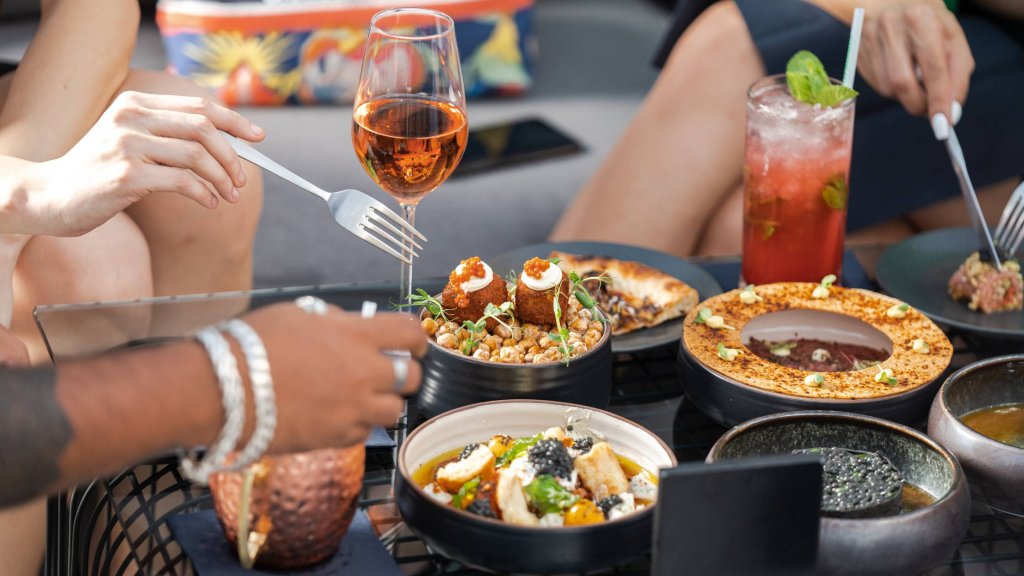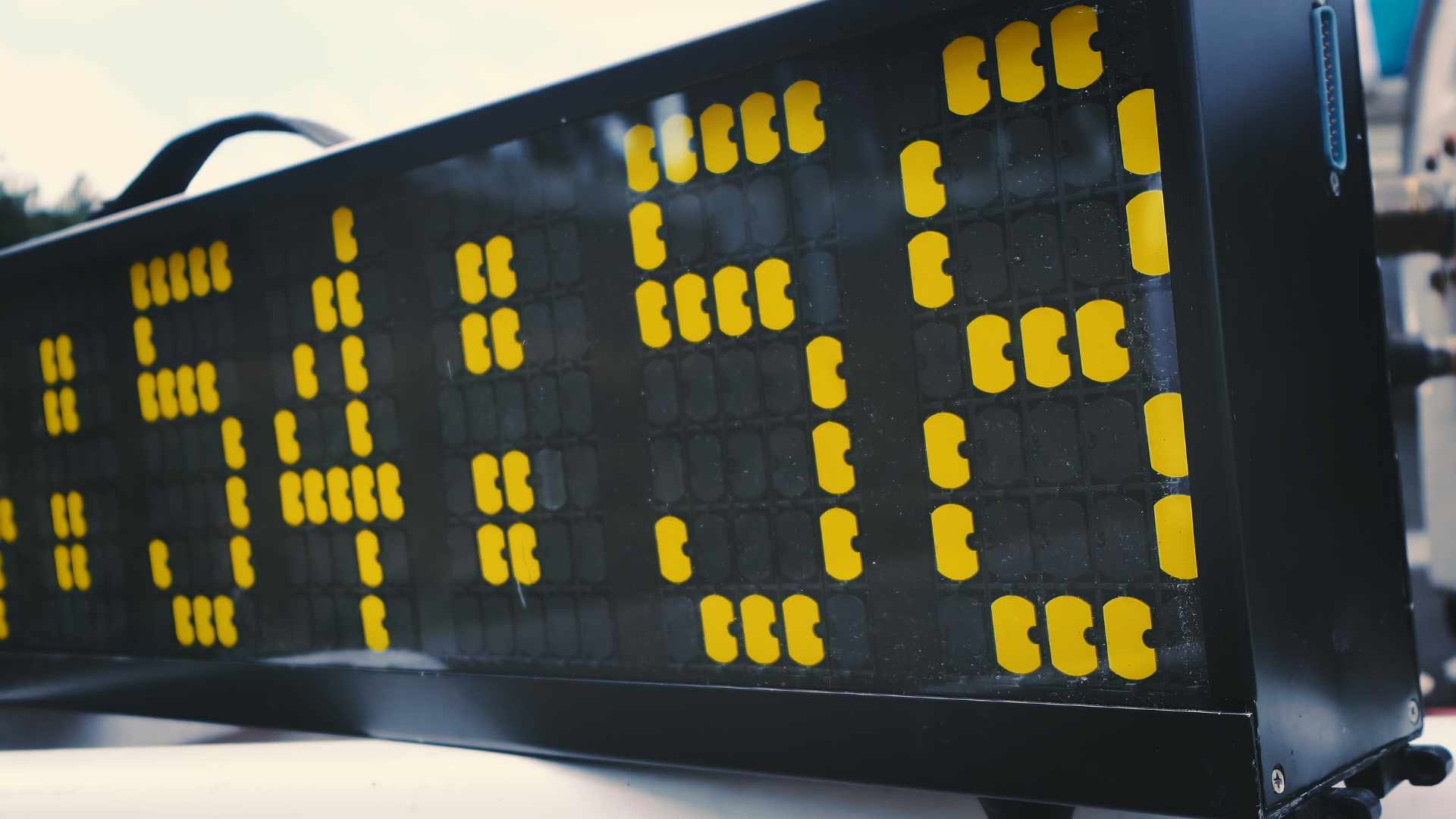VIEW BY TOPIC
- Finding Customers
- Business Systems
- Managing Employees
- Leadership
- Managing Money
Related Posts

Ready to Grow Your Business Fast?
Here’s How I Grew Five Businesses, and Eventually Sold One to a Fortune 500 Company.

Recipe for Restaurant Success: 9 Restaurant Marketing Ideas
In the competitive world of the restaurant industry, effective marketing is the secret ingredient for success. As restaurant owners and culinary entrepreneurs, understanding the nuances of restaurant marketing is essential to fill your tables and keep customers coming back for more. This article is your guide to the diverse flavors of restaurant marketing, offering insights and strategies to elevate your dining establishment to new heights.
From crafting compelling online campaigns and using data-driven techniques to mastering customer engagement and staying ahead of culinary trends, we’ll explore a buffet of restaurant marketing ideas that will boost your restaurant’s success. Read on to discover strategies that will spice up your marketing.
1. Create Artificial Scarcity for Restaurant Marketing

The Sunday Roast is a cherished tradition. Enjoying a hearty meal centered around a perfectly cooked joint of meat, accompanied by roast potatoes, vegetables, Yorkshire puddings, and rich gravy, is quintessentially English.
Many people go to the local pub to enjoy a roast. One Bristol pub, The Bank Tavern, leveraged this phenomenon to hit the headlines. The Bank Tavern, which does a good roast, started limiting the availability of its roasts.
The waiting list for a Sunday Roast slowly started to increase.
There’s now a four-year waiting list to secure a booking for this beloved tradition.
Of course, the long waiting list generates FOMO. People keep on booking to discover what makes the Sunday Roast so special. Eventually, this scarcity-driven marketing tactic generated substantial news coverage, both locally and nationally.
Adding scarcity is a great way to boost attendance. People want unique moments to share with family, friends, and loved ones. Many people will also share these moments online, which is a handy way to increase restaurant bookings.
Think about how you can incorporate scarcity into your restaurant marketing plans.
2. Create a Unique Selling Point
La Polleria, a culinary gem in the heart of innovation, is known for its remarkable waffles. While these waffles are undoubtedly delicious and crafted with the finest ingredients, it’s not their taste that sets them apart from the culinary crowd. La Polleria has ingeniously harnessed the power of design to make the restaurant a point of conversation.
They have created a culinary experience focused on the visual appeal of the dish. The introduction of waffles shaped like intimate body parts, aptly named “dick waffles” and “vagina cupcakes,” is a bold and daring move that immediately grabs attention.
These unconventional creations are undeniably provocative. They elicit a range of reactions from diners and onlookers alike – from shock and amusement to laughter and curiosity. Such a strong and polarizing response is a culinary goldmine for any restaurant.
La Polleria has mastered the art of culinary marketing. They use design to spark conversations and create memorable dining experiences that go far beyond the realm of traditional taste.
All the exposure they’ve got has catapulted the growth of the food chain. La Polleria has branches in multiple countries. Through design and marketing innovation, La Polleria proves creative marketing ideas generate huge returns.
3. Make an Extravagant Dish for Restaurant Marketing

In the world of gastronomy, chefs strive to push culinary boundaries. Salt Bae, or Nusret Gökçe, is a prime example. Beyond his charismatic seasoning technique, he gained worldwide fame with the creation of the “Golden Steak.”
The “Golden Steak” isn’t just a dish; it’s an extravagant experience. It features a perfectly cooked steak adorned with a 24-carat gold leaf finish. It’s a dish that exudes luxury in every bite.
The unique nature of extravagant dishes like the “Golden Steak” grabs the attention of diners and the media for several reasons.
Firstly, they cater to the innate human fascination with opulence and luxury, offering a taste of the high life that many aspire to. Secondly, they provide Instagram-worthy moments, encouraging diners to share their experiences on social media platforms, further amplifying the dish’s allure.
In the case of Salt Bae and his “Golden Steak,” it’s not just about satisfying hunger; it’s about indulging in an extravagant sensory journey that leaves a lasting impression. Think about how you might create a dish that captures the hearts and palates of diners while creating headlines in the media.
4. Focus on the Plating
In the digital age, where visual social media platforms like Instagram reign supreme, the visual appeal of food has become a potent marketing tool for restaurants. People enjoy the theater of eating out. Diners want to share beautifully presented and visually enticing dishes on social media.
Creating Instagrammable dishes isn’t just a trend; it’s a strategic move that can significantly impact a restaurant’s visibility and success. Each Instagram post, tweet, or Facebook share featuring your delectable creations extends your restaurant’s reach to a broader audience, creating a ripple effect of visibility.
Take Speedos Cafe at Bondi Beach as an example. It won the most Instagrammable cafe thanks to the way they plate food. The Instagram feed is a collection of mouth-watering photos.
The visually captivating dishes, creatively presented, attracted a large following and extensive media coverage, both online and offline. That commitment to innovative and aesthetically pleasing plating techniques is a key factor in the cafe’s success.
5. Focus on Experiential Dining
Experiential dining is a strategic restaurant marketing approach that creates memorable experiences for customers. It’s not just about food; it’s about ambiance, engagement, and emotions. Experiential dining is about transporting guests through carefully curated experiences to evoke emotions and leave a lasting impression.
Take O’noir, for instance, the first North American restaurant to offer dining in complete darkness. This unique approach heightens diners’ remaining senses, creating a distinctive way to savor food and appreciate surrounding sounds.
O’noir goes beyond culinary innovation; it also serves a humanitarian purpose. It employs visually impaired wait staff. It’s a nice gesture of inclusivity.
Experiential dining also builds brand loyalty. Exceptional experiences lead to return visits and word-of-mouth recommendations, enhancing your restaurant’s reputation and success in the competitive dining industry.
6. Jump on Emerging Culinary Trends

Embracing emerging dining trends is a smart move for restaurants. It can boost foot traffic and customer engagement. For instance, the last decade has seen a surge in plant-based dining for health-conscious and environmentally aware diners.
Plant Power, founded in 2016, is a prime example of a restaurant that has successfully embraced this trend. They specialize in plant-based versions of classic fast-food items, such as burgers, fries, and shakes, and have expanded across Southern California and into Nevada. Their ambitious vision is to transform fast food into a healthier and eco-friendly industry.
In 2022, they introduced a lower-priced menu to achieve price parity with traditional fast food, aligning with the trend of making plant-based options more affordable and accessible. This demonstrates their adaptability to evolving dining preferences and their commitment to contributing to a more sustainable and kinder food industry.
Moreover, staying ahead of trends positions your restaurant as an industry trendsetter. For example, the fusion cuisine trend combines flavors and techniques from different cultures. By incorporating fusion dishes on your menu, you can showcase your restaurant’s adaptability and creativity, appealing to a diverse range of patrons and reinforcing your reputation as a forward-thinking establishment.
7. Focus on Digital Marketing
Innovative digital marketing campaigns are crucial for restaurants today. There are great opportunities to run engaging campaigns if you keep your finger on the pulse of the latest developments in digital technology.
For instance, McDonald’s and Burger King’s playful competition in the ChatGPT realm showcases the potential for leveraging emerging trends for marketing purposes. Both companies used ChatGPT answers to highlight brand presence.
By staying attuned to cutting-edge technologies and trends, restaurants can find creative ways to connect with their audience, spark conversations, and generate buzz.
Moreover, these examples highlight the importance of agility in marketing.
Both McDonald’s and Burger King demonstrated their ability to swiftly respond to a new trend and turn it into a marketing opportunity. Agile marketing teams can create campaigns that make them trendsetters, fostering customer engagement and brand loyalty in the process.
8. Invest in Collaborations for Restaurant Marketing
Investing in collaborations can be a strategic restaurant marketing move to expand your reach and tap into new customer segments. Collaborating with influencers and food bloggers who have a significant online following can amplify your restaurant’s visibility in the digital realm.
Shake Shack’s collaboration with influencer @foodwithmichel is a prime example of effective digital marketing in the restaurant industry. This partnership enabled Shake Shack to broaden its market reach. It capitalized on @foodwithmichel’s substantial online presence. His engaging video, which got 42,000 views, showcased their new chicken sandwich.
This campaign’s impact highlights the importance of digital visibility for modern brands. By leveraging influencer partnerships, Shake Shack enhanced its online footprint. It reached new customer segments. The strategy was more than product promotion. It reinforced Shake Shack’s image as an innovative and forward-thinking brand.
9. Focus on Email Marketing
Gathering email sign-ups is a crucial strategy for restaurant marketing. Entice customers to subscribe by offering unique incentives, such as special discounts, exclusive menu previews, or early reservation opportunities. Ensure the sign-up process is easy and accessible, both online and in your restaurant.
Utilize strategic placements like your website, social media, and even QR codes on dining tables. Then use a tool like ClickFunnels, or an alternative to ClickFunnels, to create your landing page where you get those signups.
Engagement is key once you’ve built your email list. Regular, engaging emails that connect with your audience are essential. Include content like behind-the-scenes stories, new menu highlights, and personalized offers based on past visits. The aim is to build a connection that extends beyond simple promotions, cultivating a sense of community among your patrons.
Lastly, constantly analyze and refine your email strategy. Track open rates, click-through rates, and overall engagement to understand what resonates with your audience. Consider segmenting your list to tailor content more specifically, such as differentiating messages for frequent diners versus occasional visitors. This targeted approach helps in nurturing long-term customer relationships and fostering brand loyalty.















